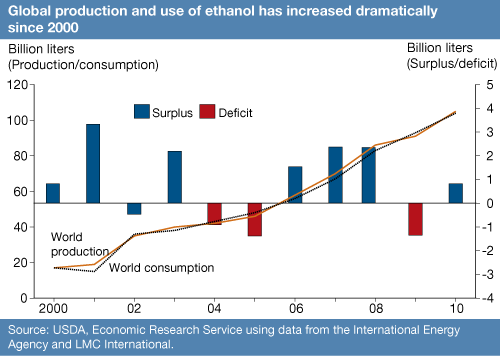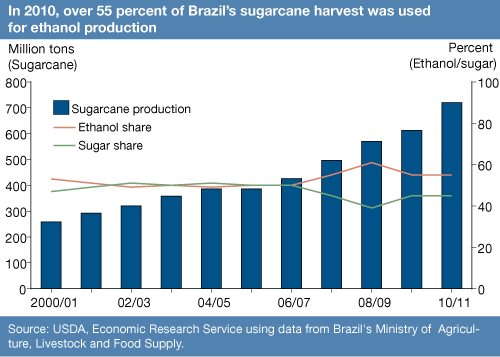Will Brazil be able to meet the worldwide demand for ethanol, if production in the U.S. decreases due to the loss of subsidies?
The federal tax credit for ethanol expired on December 31, ending an era in which the federal government provided more than $20 billion in subsidies for the production and use of ethanol.
What's the future of corn ethanol in the U.S.? In recent years, about one-third of the U.S. corn crop went to ethanol and byproducts, including animal feed.
In an interview earlier this month, Dean Taylor, former president of the Iowa Corn Growers Assn., said, "We are in a fairly prosperous period for agriculture. Agriculture has not been as much of a touchstone for presidential candidates this time around."
He adds that the loss of the tax credit "will reduce the profit margin for a lot of people in the ethanol business. "It won't be fatal as long as the demand for ethanol and gasoline remains strong."

|
Brazil is now the world's largest grower of sugarcane at 719 million tons in 2010, accounting for a third of world production, and it's the world's second largest ethanol producer and exporter (after the U.S.). In 2010, Brazilian sugarcane used for ethanol production totaled 398 million tons, or 55.4% of the sugarcane harvested. Domestic and global growth in ethanol demand has boosted the share of cane used for ethanol since 2006-07. The allocation of sugarcane to production of sugar vs. ethanol is set by millers based on expected sugar and ethanol prices and market demand. This marks a significant change from the early years of Proálcool (Brazil's ethanol program), when the allocation of sugarcane to ethanol production was an administered policy instrument to counter oversupply of sugar and low international sugar prices.

|





